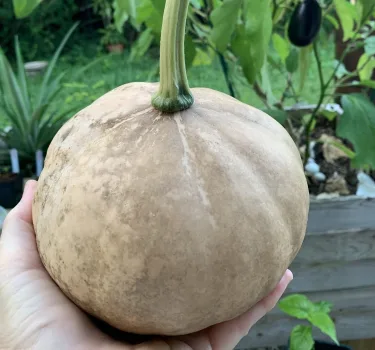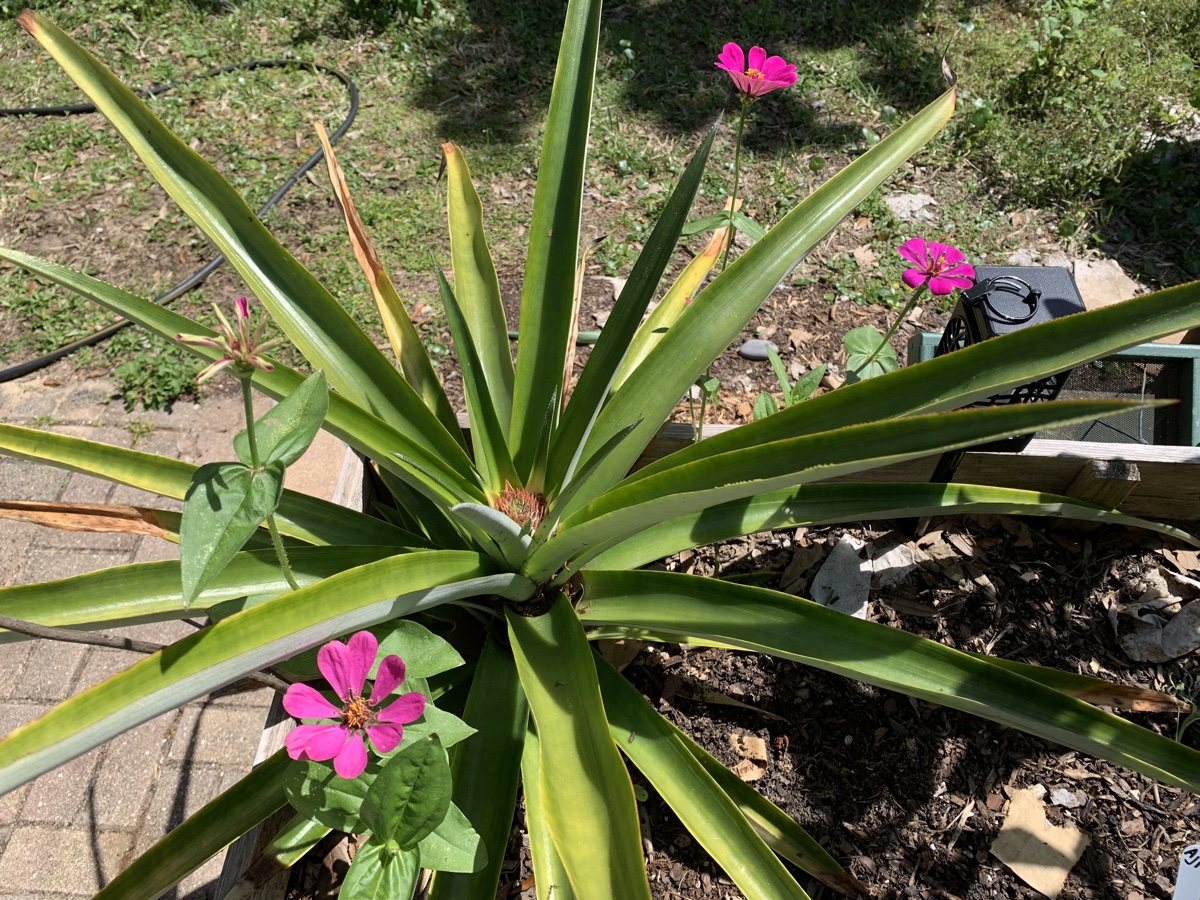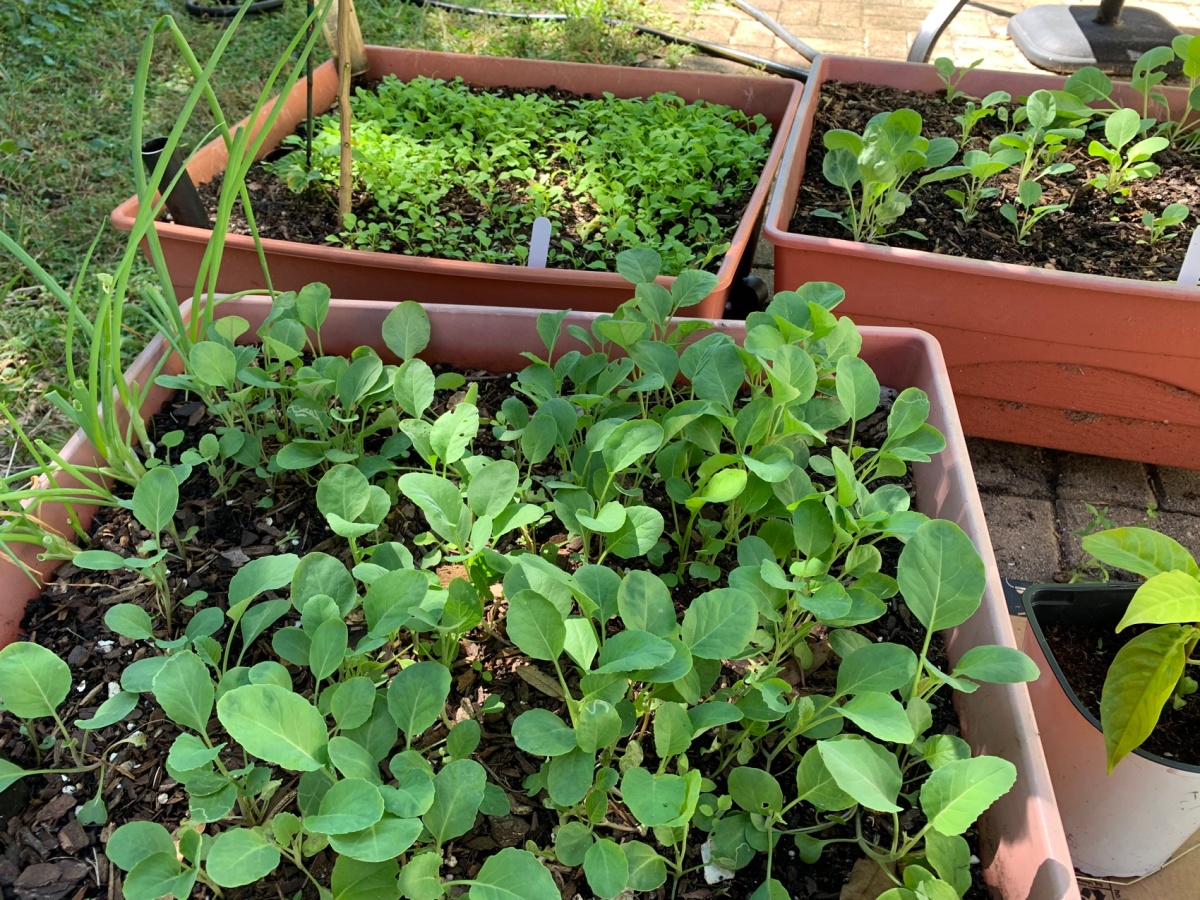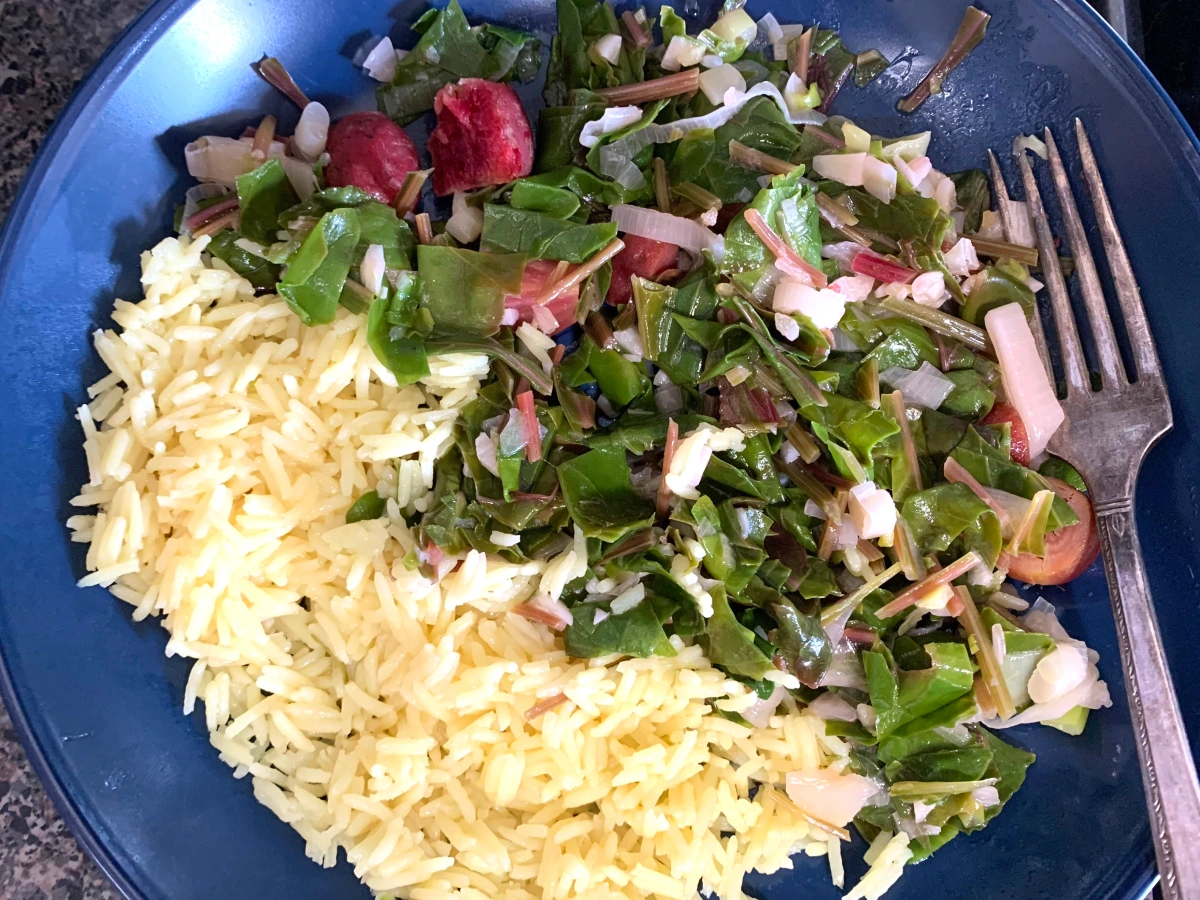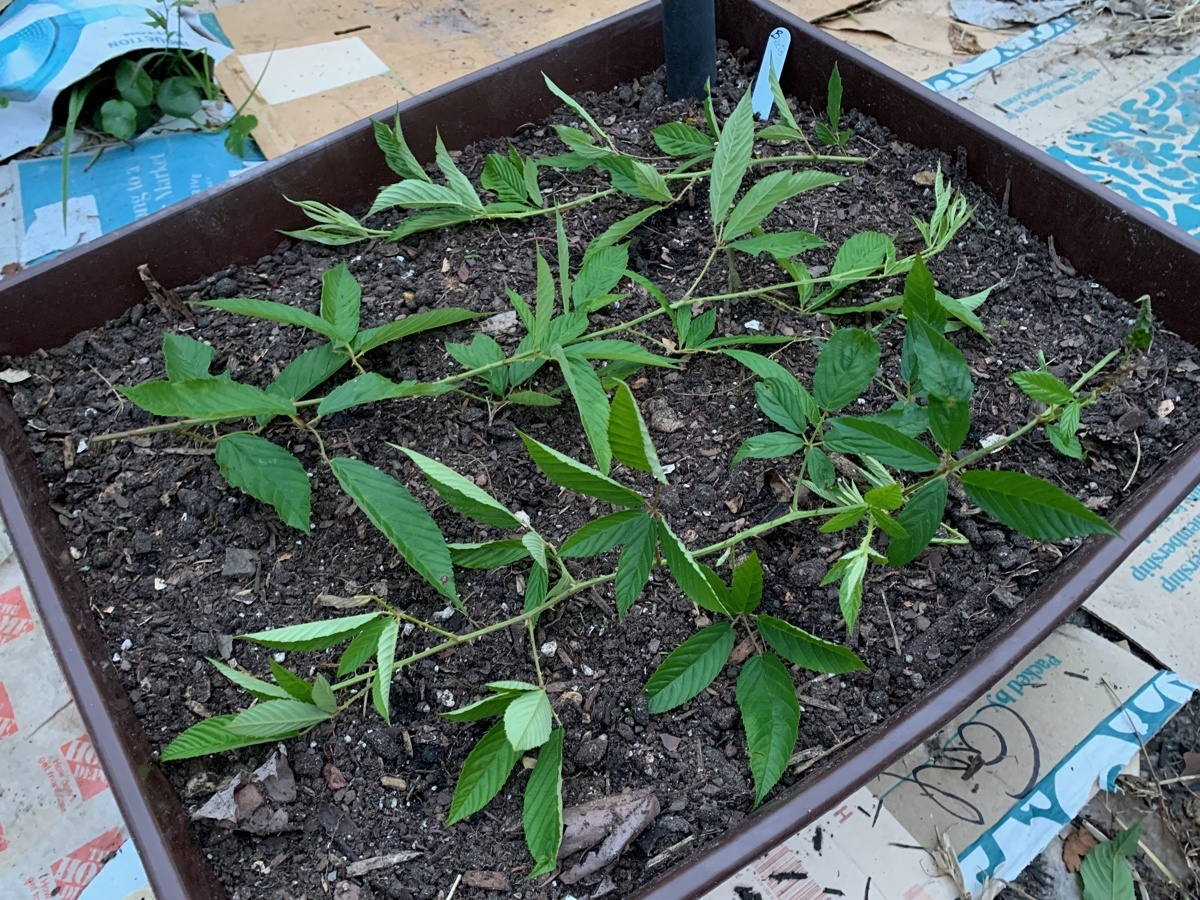If you have been bitten by the gardening bug, but don’t know where to start, I suggest you start small. A small space is easier to manage especially if one person alone will be tending it. I am not covering raised beds that cost a lot to buy and / or build. The garden ideas I mention here are inexpensive to create.
Take your time and abilities into consideration. Begin with a small, manageable space outside, such as a grow box, fabric pots, or little area of the yard to plant. All of this works for growing flowers too.
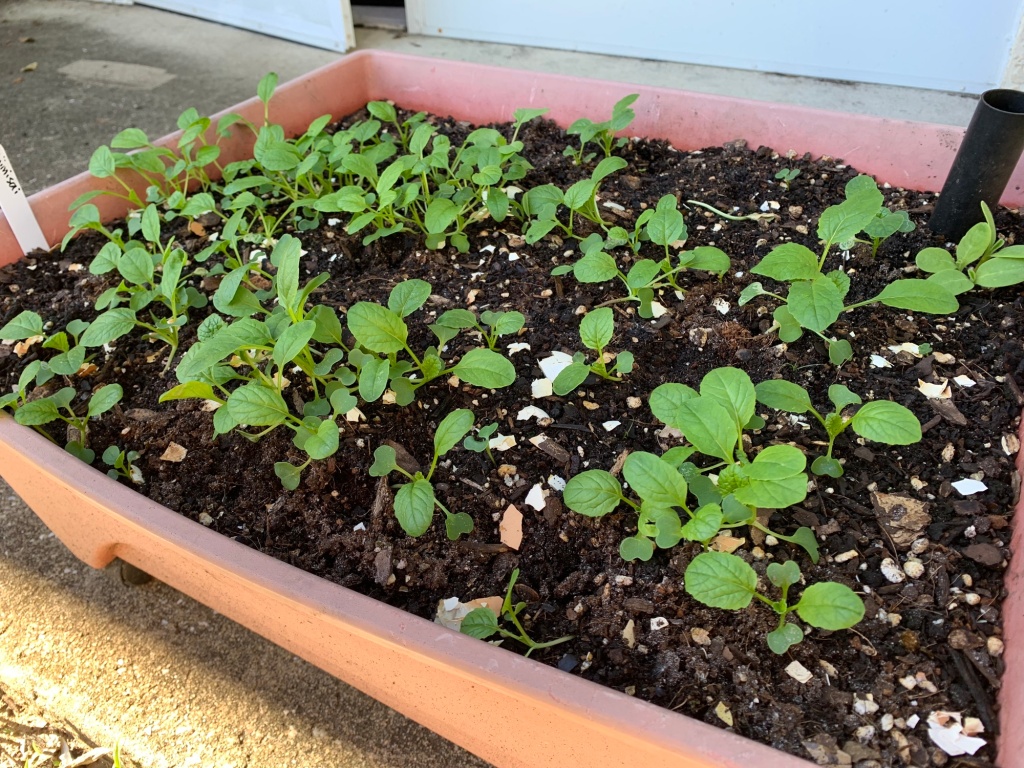


Plant For Your Climate
No matter where you live, do some research about what grows well in your area. I made the mistake of trying to grow the same types of veggies I grew in New Hampshire when I moved to Florida! It was a disaster and I became very discouraged.
I live in east, central Florida where gardening can happen year round, if the correct types of veggies are planted.
Grow Boxes Keep Everything Contained
I started my Florida gardening journey with a few grow boxes. I bought them at Home Depot and filled them with potting soil. This was a great way to get started without having to dig up the yard or do sheet mulching. The boxes are on rollers which makes them easy to move on my patio. Weeds can’t grow in, but you will see some pop up.
The downside of grow boxes is that they are not very deep. But, I have grown green pepper, eggplant, and tomatoes in these boxes. If you attempt this, keep it down to one large plant per box.
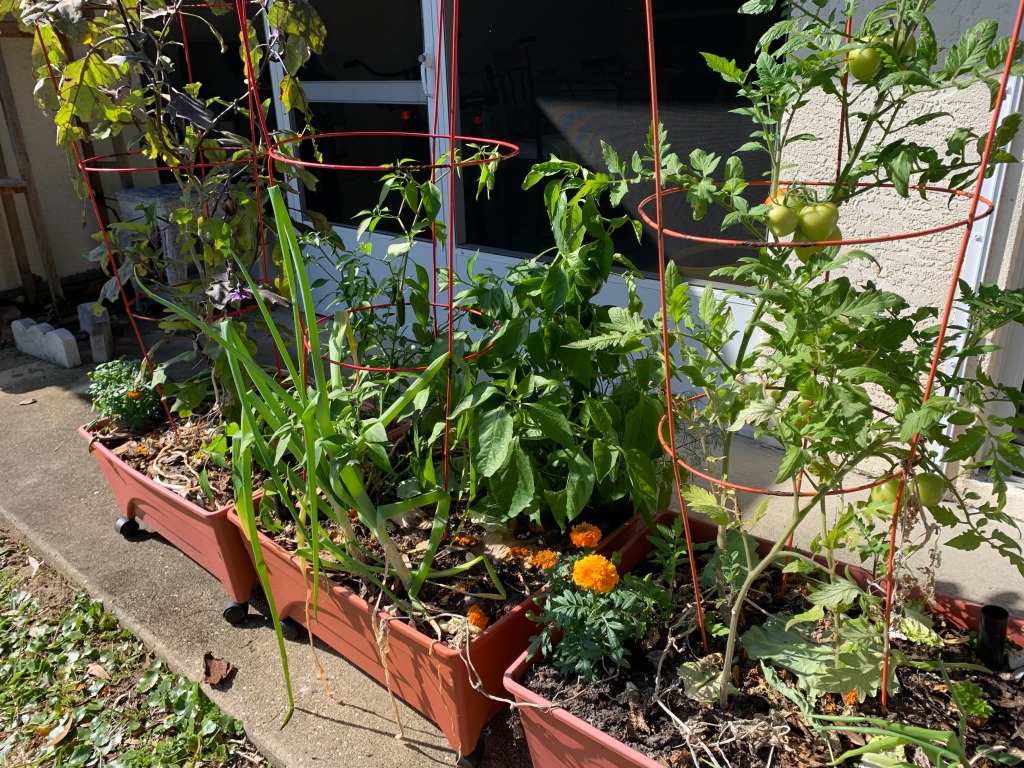
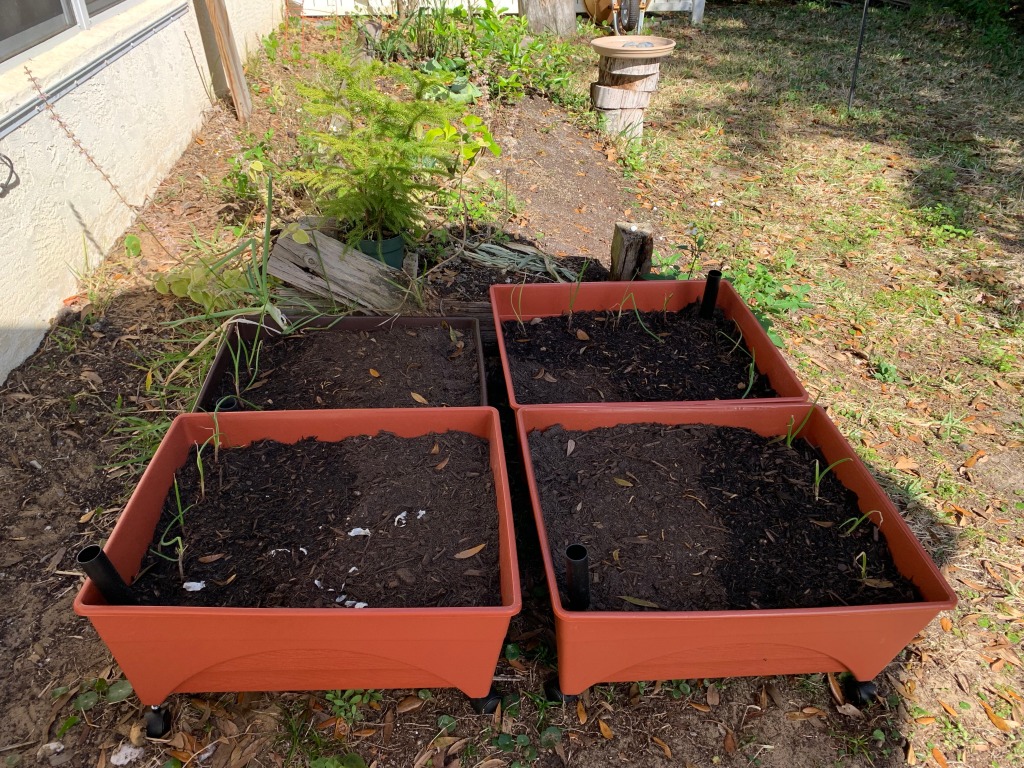


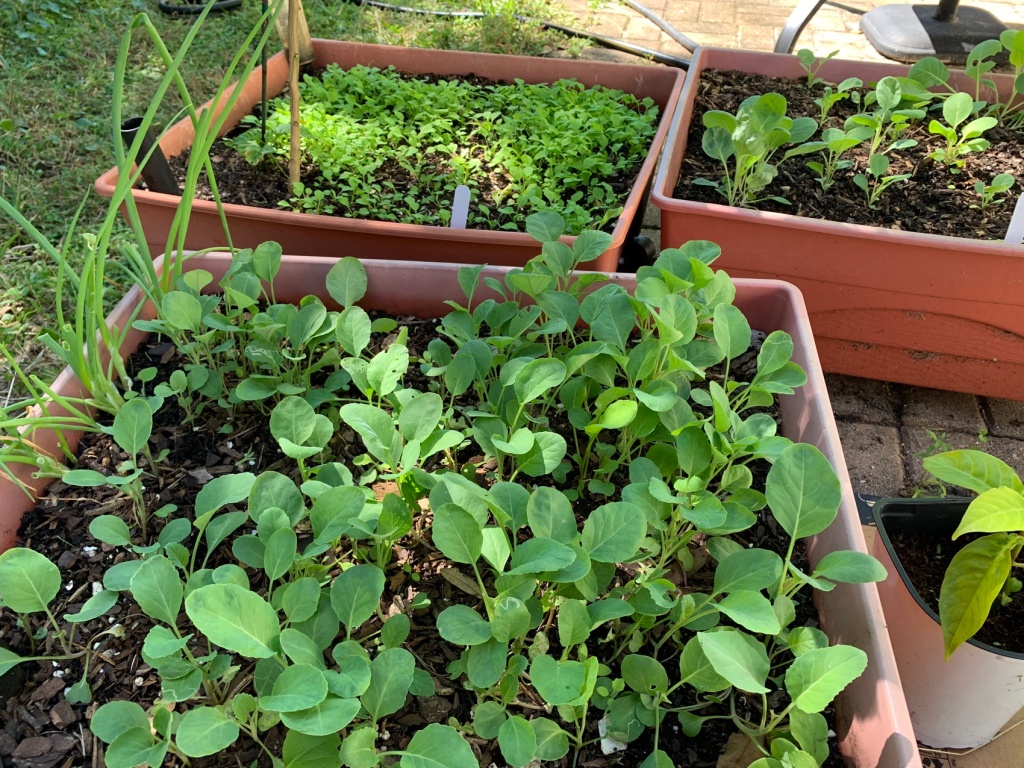
These boxes will easily hold some herbs or greens such as spinach, arugula and lettuce. A flowering plant, such as a marigold could be added, or plant scallions along the edge.
Raise some worms
The boxes are also great for starting worm families. I am not a worm grower, but when I added a few worms from the yard to a box they multiplied! From there the worms can be added to other boxes, or back into the yard. Worms are excellent for making the soil better.
A place for some compost
At the time, I did not have a compost area, or my Hot Frog, so my fruit and vegetable skins, tops and leftovers were chopped and added right to the soil in the box. Mostly I added banana skins and coffee grounds, and I didn’t overdo it.
My boxes are similar to the ones in the Amazon link below. They come with a tube where the water is supposed to be added, but I treat my boxes normally, watering from the top, unless it’s very hot and dry.
Grow Box With Wheels at Amazon (paid link)
Fabric Pots For Vegetables
Fabric pots come in many different sizes and can work to grow small amounts of vegetables. Either use one bag to grow a large type plant, such as eggplant or tomato, or fill it with carrots, greens, or herbs, that can be grown closer together. The pots are usually taller than the boxes, but not as wide. Be careful not to overcrowd vegetables.
Vegetable Root Depths – a General Guide
I wrote a whole page about Gardening in Fabric Pots and my experiences in New Hampshire and Florida. Dark colored pots can help warm the soil for growing in the northeast and other colder climates with a short growing season. In Florida, I like the ability to move the pots out of hot sun as needed.

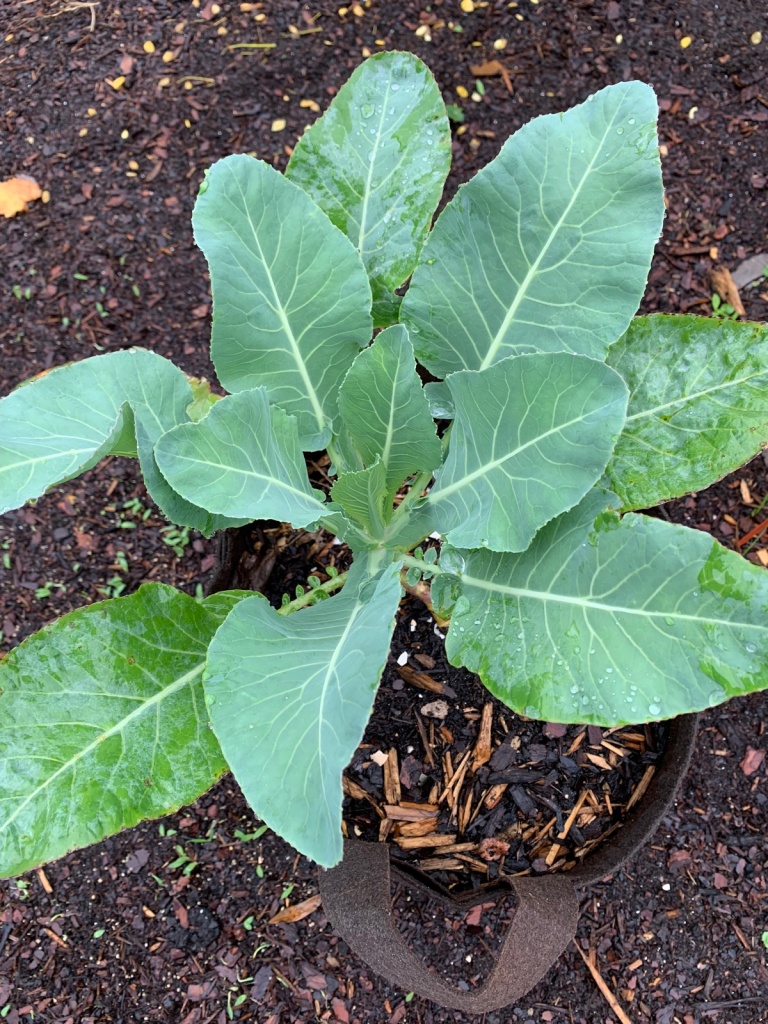
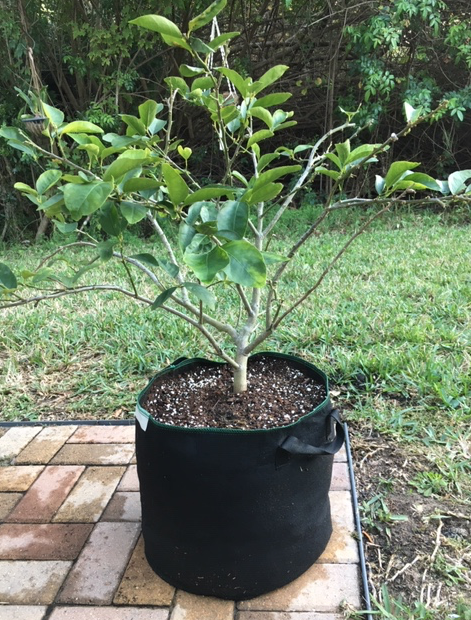
Most pots have handles and can be carried, or dragged, to a new location. Do this before watering, or when the soil is fairly dry. Be aware that water runs out of the bottom and sides of the fabric.
Buy Fabric Pots at Amazon (paid link)
Sheet Mulching in Small Spaces
This small gardening idea would be a permanent addition to the yard and is recommended for someone who knows they want to garden, and will continue. Sheet mulching will kill the grass. This is also a time intensive way to garden.
If you have never heard the term “sheet mulching” it is simply this; not digging up what is already there. Cover the lawn / garden area with paper / cardboard with dirt or mulch on top. (Buy dirt and mulch = expense.)
Why do it this way? If your yard is grass, as many are, and if you are not heavily spraying or using chemicals on the grass, things will be living just beneath the surface. Worms tend to be crawling around the grass roots. You may not like bugs, but they are necessary and all have a role to play.
Using a rototiller or digging with a shovel, disrupts whatever good is already there. Putting down cardboard or newspaper leaves it all alone. Yes, the grass will die, but the dirt will remain in good shape. But this is just the beginning. Amendments to the soil and fertilizer will have to be applied. This is the start of “real” gardening.
Also, please note that cardboard and newspaper will break down and eventually weeds may begin to come up. More cardboard can be added, or mulch, but this is an ongoing process. Sheet mulching just gets you started.
My yard, Spring to Winter using cardboard
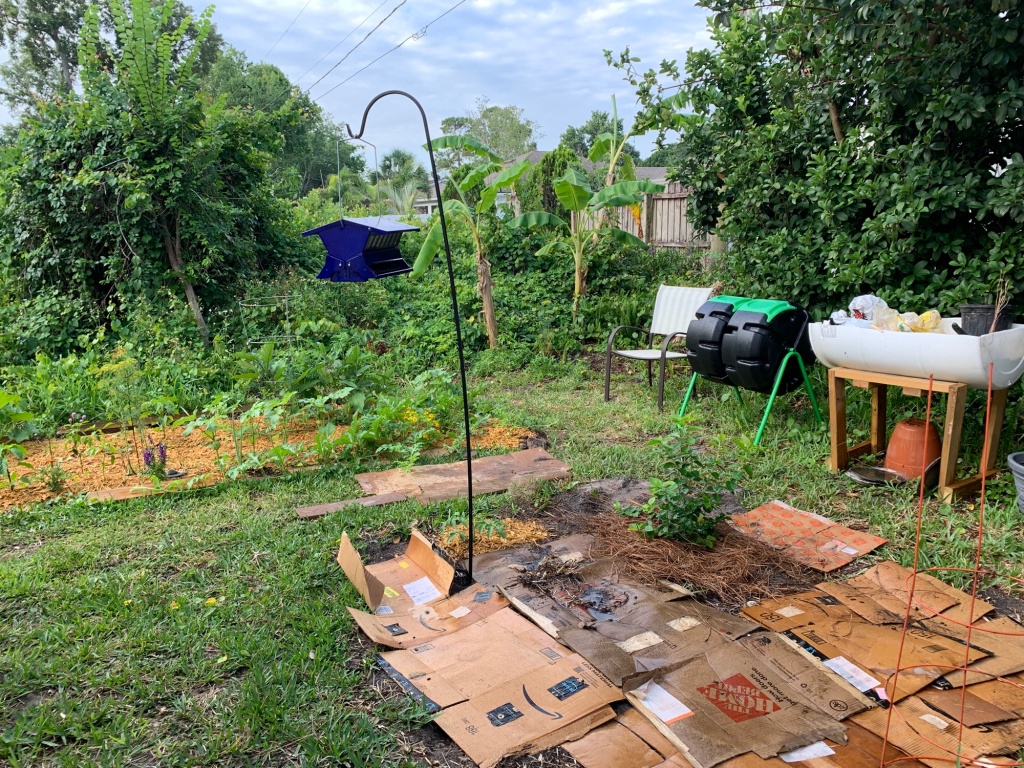

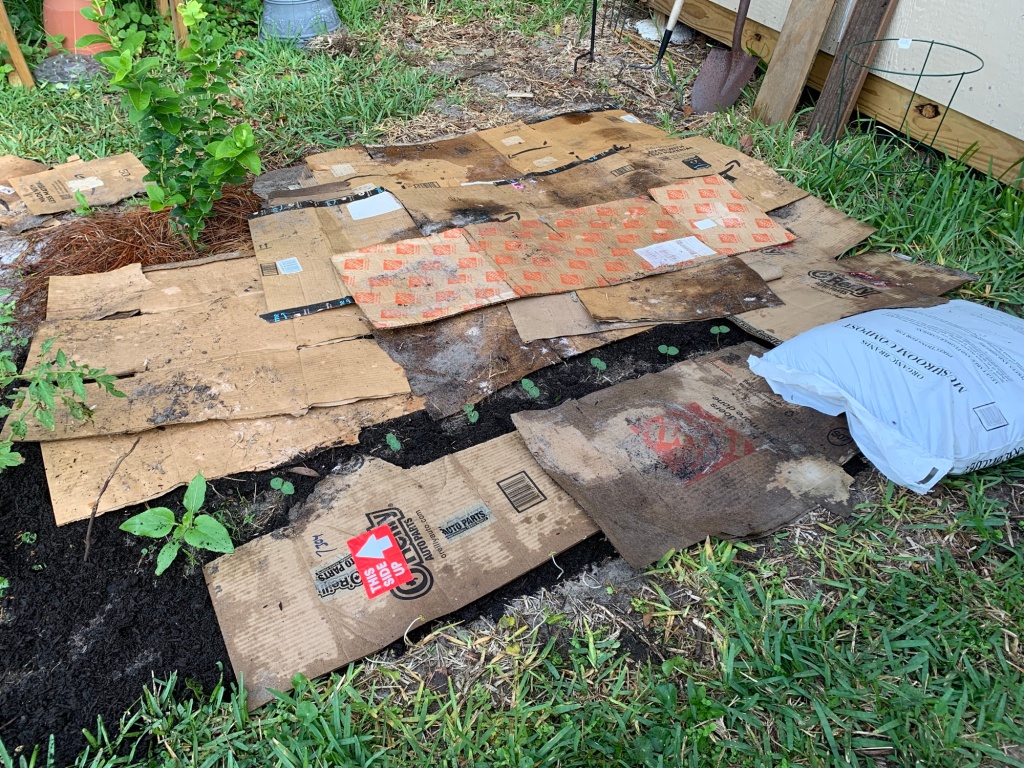
Above – Spring and summer cardboard. Below – Dirt added for garden space (Fall and winter seasons).


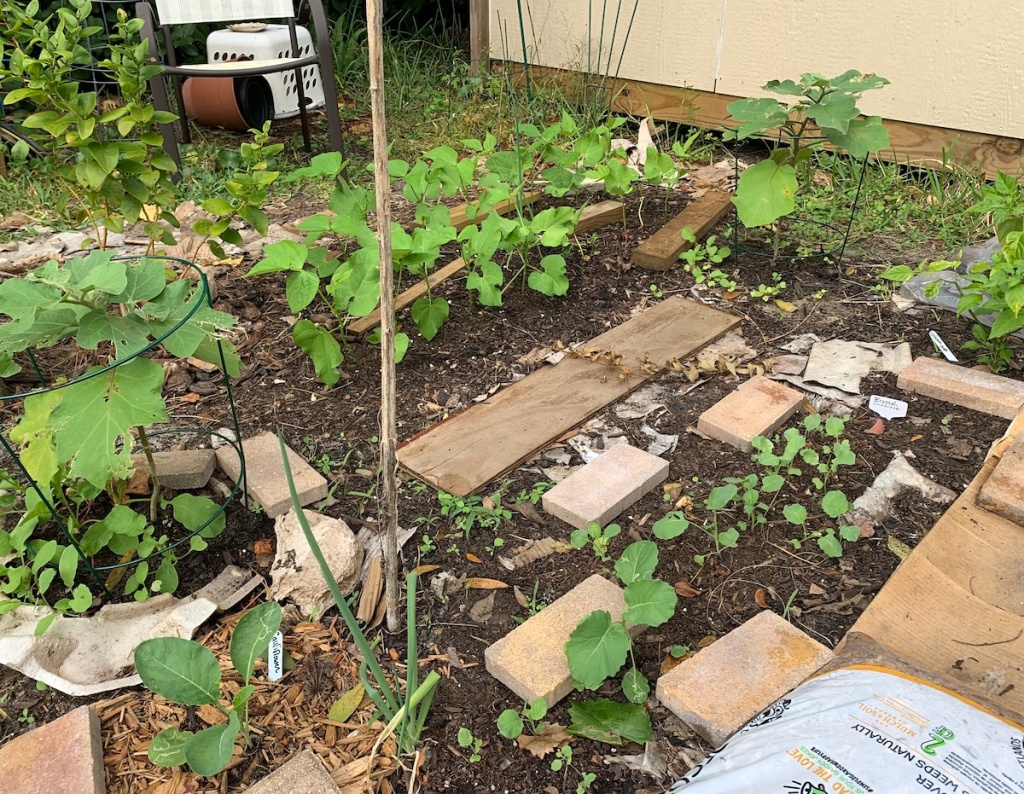
If you choose to go this route, save boxes and / or newspaper and plan to spend quite a bit more in dirt and mulch. A ground garden needs to be weeded continuously, unlike boxes and bags. Probably the biggest problems with gardening normally, in the ground, is that critters that will destroy crops. I deal with destrucion by raccoons and armadillos.
My Thoughts on Grow Boxes, Fabric Bags and Planting in the Ground
I use all of these types of gardens, but I began with a couple of grow boxes and expanded from there. I’m still expanding, saving cardboard and buying dirt and mulch. In Spring 2023 I dug up (yes, dug) an area for the first phase of my garden and I am continuing to expand.
Each type of garden has its own good points. Gardening in the ground is a lot of work, but the plants have space to expand as they need. I’ve always believed that anything planted in the ground will do better than in a confined space. Some things, like watermelon and pumpkins, need to be in the ground.

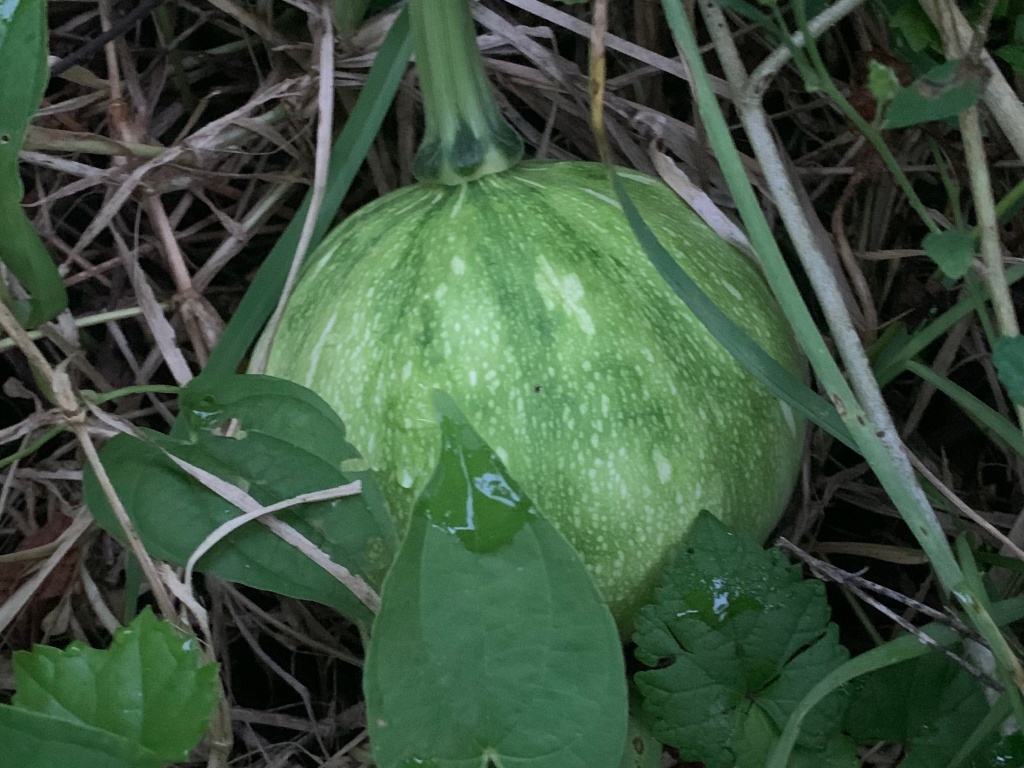
Vegetables that normally grow and die by winter don’t always do that here in zone 9b. Anything that continues to grow for years could work in a fabric bag, leaving garden space for other vegetables. My boxes are used mostly for greens now, or as nurseries to begin plants that will be moved to the garden when they grow.
Time vs. Food
I am an older woman with a job, but my kids are grown. I have a lot of time to garden as I want, and I do it all by myself. Consider the time you have and want to spend gardening, and figure out what you want to grow (eat) the most. If it’s herbs you’d like for cooking, a grow box is the way to go. If you love fresh tomatoes, maybe a large fabric pot or two would be best (one plant per bag).
Once your garden (in whatever form you choose) is ready to plant, determine the right planting time in your area, buy seeds or seedlings, and get gardening! I wish you luck.
